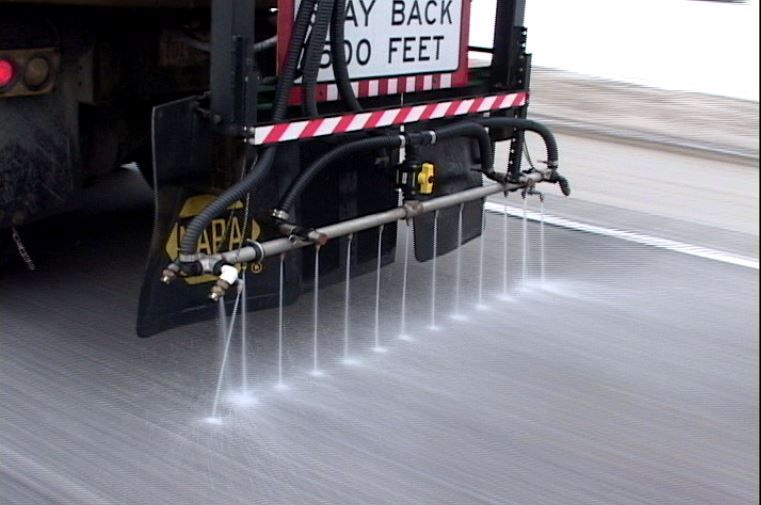Preventing ice buildup on your driveway is one way to keep you and your family safe through the worst of winter. Ice can lead to falls or injuries, and can cause cracks and potholes in your driveway’s surface. Read how to prevent ice on your driveway, whether you use chemical de-icers or eco-friendly options, in our do-it-yourself guide below.
Understanding the Dangers of Ice Formation
Anyone who walks on your icy driveway can fall or injure themselves. Ice can also damage your driveway’s surface and cause cracks and potholes. The freeze-thaw cycle, during which water seeps into cracks and then expands as it freezes, can make existing damage even worse and lead to costly repairs.
Types of Ice Prevention Methods
Chemical de-icers or non-chemical alternatives are the two main methods with which you can prevent ice.
Chemical De-Icers
The products below lower the freezing point of water, which can melt ice or prevent it from accumulating at all.
- Calcium chloride
- Magnesium chloride
- Potassium acetate
- Rock salt (sodium chloride)
Chemical de-icers are effective, but can harm pets, plants, and the environment. They can also damage your driveway and metal surfaces over time.
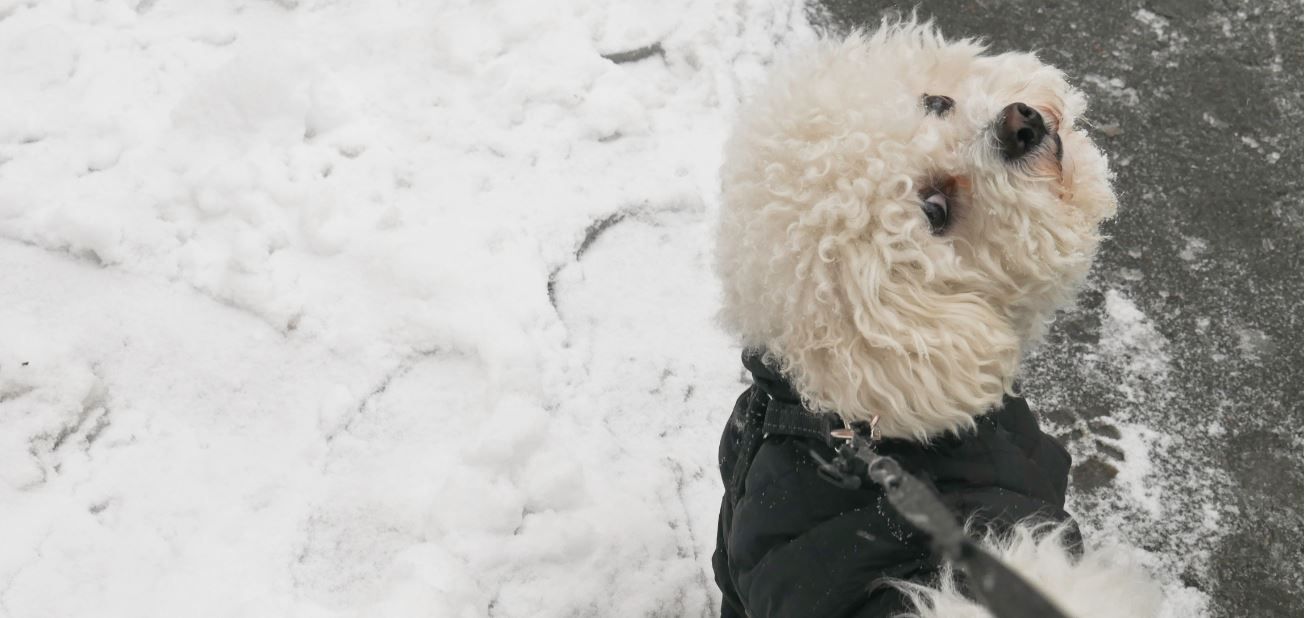
Non-Chemical Alternatives
Non-chemical alternatives to chemical de-icers create traction and stop ice from bonding to your driveway. A few types of these alternatives are below.
- Kitty litter
- Heated driveway systems
- Sand or gravel
- Wood ash
These methods are generally safer for the environment, but they may cost more, and you may need to apply them more frequently.
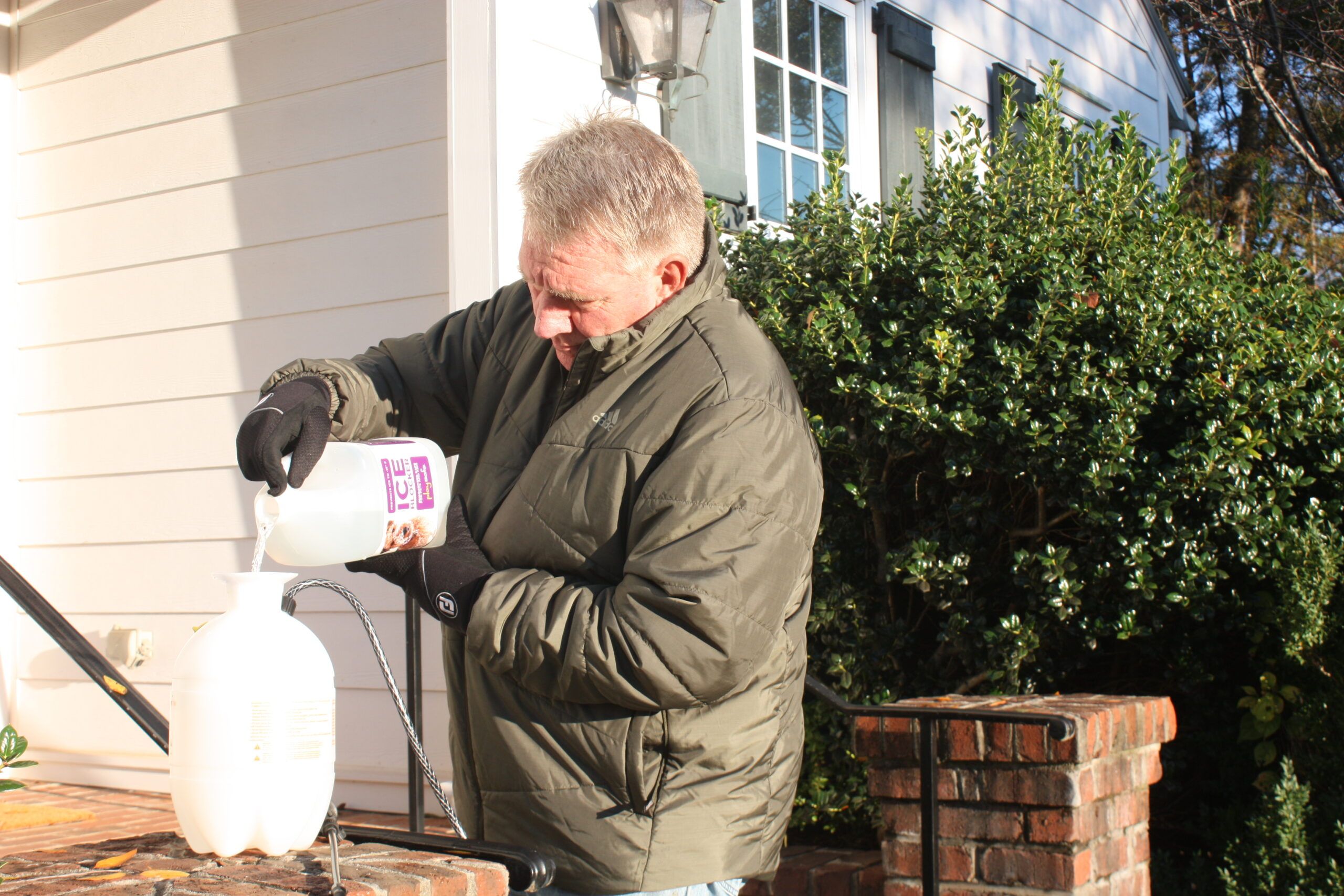
Pre-Treatment Strategies for Ice Prevention
Pre-treating your driveway can prevent ice from bonding to the driveway’s surface. This will make the ice easier to remove later.
Applying Liquid Anti-Icers
You can apply liquid anti-icers such as PlaySAFE Ice Blocker before a storm to prevent ice from sticking. These products form a barrier that makes ice removal easier. You can use a pump sprayer to evenly coat your driveway before snow or freezing rain hits. You may need to reapply the anti-icers frequently if there’s heavy precipitation in the forecast.
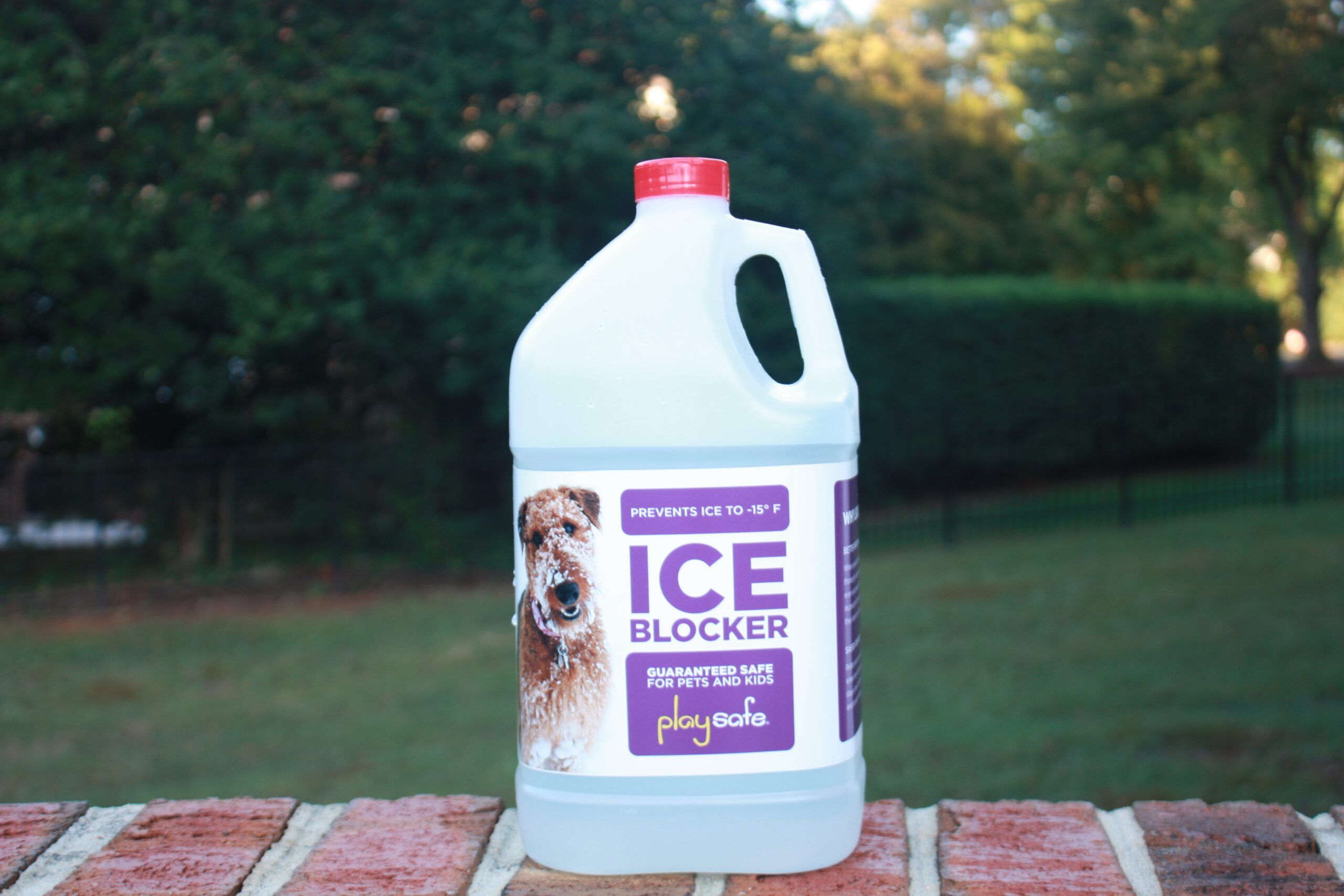
Using Salt-Based Products
You can use salt-based products to prevent ice, but they might not be as effective as liquid options. Spread a thin, even layer before any snow falls to get the best results. You’ll need to reapply salt-based products more frequently than liquid solutions.
The Environmental Impact of Ice Prevention Methods
Think about the environmental impacts of whatever ice-prevention method you use.
Effects on Plants and Soil
Many chemical de-icers can accumulate in your soil and harm or kill grass or plants when they run off your driveway. Acetate-based products such as PlaySAFE are generally safer for plants and soil.
Consequences for Waterways
As ice melts, the chemicals you use can wash into storm drains and local waterways. This runoff can harm aquatic life and affect water quality. Chloride-based products are particularly problematic, as they can increase salinity levels in freshwater ecosystems. Choose environmentally friendly alternatives or use chemical de-icers sparingly.
DIY Ice Prevention Techniques
Consider using one of the ice-prevention methods below if you’re a DIY enthusiast.
Creating Traction with Sand or Gravel
Spreading sand or gravel on your driveway adds traction to your walking space but doesn’t melt ice. It’s a quick fix for making surfaces safer for walking or driving. Focus on areas with high traffic or steep slopes, and reapply as needed after you remove snow.
Installing Heated Driveway Systems
Install a heated driveway system to prevent ice in a long-term capacity. Heating systems use electric heating elements or hot water pipes to keep your driveway clear of ice. The initial cost is high, but the system is reliable and long-lasting.
Professional Ice Prevention Services
Calling in a professional service is sometimes the best way to manage ice prevention. You should phone a pro in the following cases:
- You don’t have the time or the physical ability to handle it yourself.
- You have a large or complicated driveway.
- You want consistent, reliable results.
The cost of professional services varies based on your driveway’s size, the frequency of service, and the products professionals use. Professional services can be more expensive than other ice-prevention methods, but pros can save you time and more reliably prevent accidents or damage.
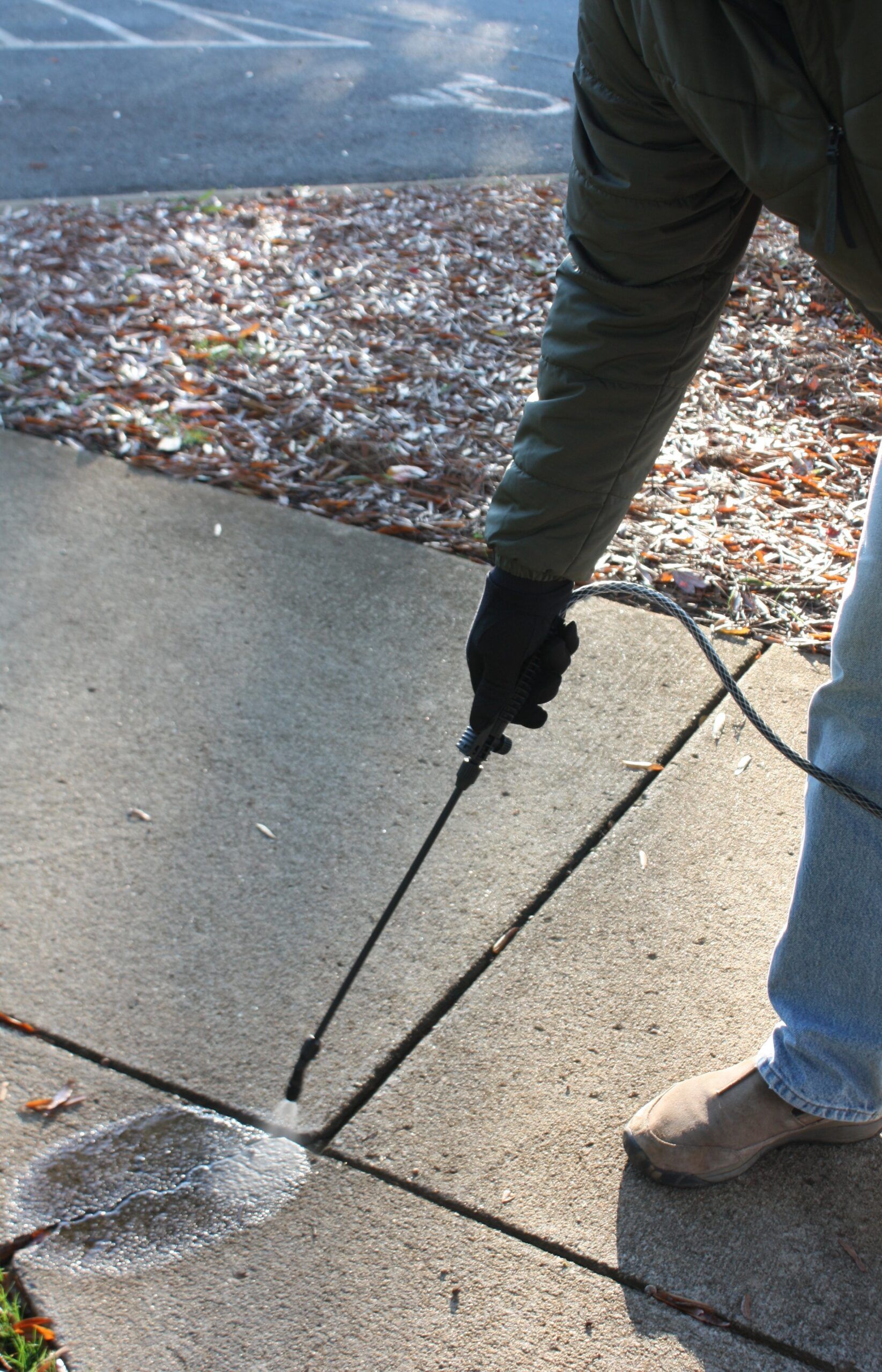
Maintaining Your Driveway To Reduce Ice Formation
Properly maintaining your driveway throughout the year helps to reduce the likelihood of ice formation in the winter.
Proper Drainage Solutions
Proper drainage is key to preventing ice from building up. Grade your driveway to direct water away from the surface, and install drainage channels or French drains along the edges. Keep gutters and downspouts clear so water doesn’t flow onto your driveway and freeze.
Regular Sealing and Repair
Regularly seal your driveway to prevent water from seeping into cracks. Address cracks and low spots immediately, and apply a sealant every few years to protect the surface.
Special Considerations for Different Driveway Materials
The best method of ice prevention depends on your driveway’s material. Read how to address concrete and asphalt driveways below.
Concrete Driveways
Concrete is sensitive, and salt-based de-icers can easily damage it. Avoid using sodium chloride. Instead, choose safer alternatives such as calcium magnesium acetate. Make sure to shovel snow quickly to reduce the need for de-icing.
Asphalt Driveways
Asphalt is more durable than concrete but you can still damage it with too much chemical de-icer. Regularly seal your asphalt to protect it from water damage and ice buildup.
